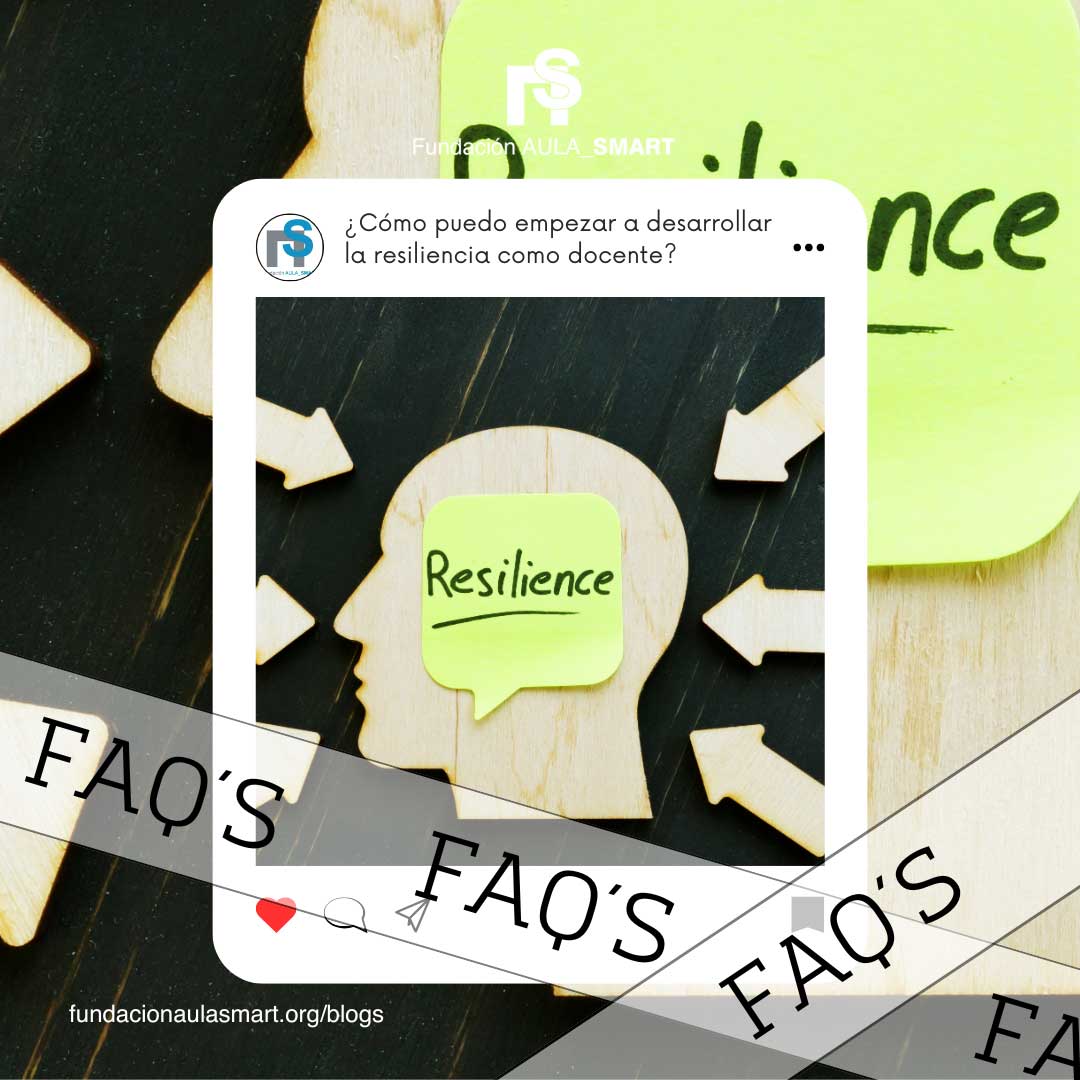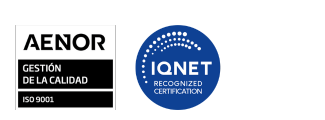The technological revolution in classrooms: threat or complement to teachers? Who will lead the education of the future?
From the Aula_Smart Foundation, our commitment is to integrate technology into education for enhance teaching workNot to replace it. In a world where artificial intelligence and digital tools advance rapidly, it is natural to ask if these technologies will replace the fundamental role of the teacher.
This article explores the impact of technology on education, evaluating the benefits and limitations of its implementation in the classroom. Accompany us in this analysis to understand why we firmly believe that teachers are irreplaceable and how technology should be seen as a tool to strengthen their work, not to move them.
The current role of technology in education
At present, technology plays a fundamental role in the classroom, providing innovative tools that facilitate access and dissemination of knowledge. Platforms like Classroom_smart They have allowed students and teachers around the world to access educational resources quickly and flexibly. Online learning platforms, classroom management applications and videoconference tools have expanded educational opportunities globally.
However, the success of these tools depends largely on how they are integrated with the teacher's pedagogical knowledge. Technology itself cannot teach; It requires a facilitator that adapts and directs its use according to the specific needs of the students.
The key functions of teachers in the classroom
Teachers not only convey academic knowledge, but also play a fundamental role in the emotional and social development of students. Empathy, orientation and support they offer to students are irreplaceable. Teachers help students develop skills such as teamwork, resilience and conflict resolution, crucial aspects for their personal and professional development.
In addition, the judgment and adaptation of teachers allow adjusting the lessons in real time, responding to the understanding and motivation of each student, something that technology cannot yet replicate.
Artificial intelligence in the classroom
The Artificial Intelligence (AI) It has begun to occupy an important place in education, supporting teachers in repetitive and administrative tasks. Applications with AI can customize learning by adapting content and activities to the level of each student. In addition, AI tools can evaluate students' progress, allowing the teacher to focus on those who need additional help.
Even so, AI lacks the ability to make decisions based on the emotional and social context of the classroom. Its function is complementary and depends on the orientation and supervision of the teacher to be effective.
The benefits of technology in teaching
Technology has facilitated flexible learning, allowing students to access educational materials at any time and from anywhere. This has been especially valuable in situations such as distance education or in contexts where the physical access to the classroom is limited.
In addition, technology allows the personalization of learning, adapting to the rhythm and style of each student. With digital tools, teachers can create more dynamic and attractive learning experiences, thus motivating students and maintaining their interest.
Technology limitations in replacing teachers
Despite its benefits, technology faces significant limitations when it comes to replacing a teacher's human qualities. For example, automated teaching systems cannot express empathy, respond to students' emotions or address personal conflicts in the classroom.
Teachers offer emotional support that is essential for learning. This human dimension is especially important in early and youth education, where students require guides that help them form their identity and values.
The role of AI in learning customization
One of the great advantages of AI in education is its ability to customize learning. IA systems can identify patterns in students' performance and adjust the content according to their individual needs. This means that students advance at their own pace, strengthening the areas where they need to improve.
However, teacher supervision remains crucial, since only a human being can adapt the teaching based on the specific emotional, social and cultural factors.
Technology in student evaluation
Technology has facilitated automated evaluation, reducing the administrative load of teachers and providing immediate results. Digital tools allow teachers to evaluate the progress of students with more precision, analyzing data quickly and structured.
However, there are limitations: technological evaluations can measure technical skills, but have difficulty evaluating soft competitions such as creativity, critical thinking and ethics, which require a human approach.
Can technology foster critical and creative thinking?
The development of critical thinking and creativity is an essential aspect of education that requires an environment of reflection and dialogue. Although technology can facilitate access to information, it is teachers who raise the right questions, challenge ideas and guide deep analysis.
Critical thinking requires human interaction, questioning and joint exploration of ideas, something that technology cannot still effectively perform without the intervention of an educator.
Socio -emotional education: an exclusive land for teachers
The socio -emotional aspect is fundamental in the development of students. Emotional and social education helps students understand their feelings, empathize with others and establish healthy relationships. In Foundation Classroom_smartWe believe that this is an exclusive field for teachers, who, with their experience and humanity, provide the necessary support in the emotional growth of each student.
Technology can complement this work through self -learning resources, but cannot replace the empathy and understanding that teachers contribute to the classroom.
The future: teachers and technology as allies
The future of education should not consist of replacing teachers with technology, but in promoting harmonious collaboration between them. Technology can enhance teaching, allowing teachers to concentrate on those aspects that require a human touch.
In Foundation Classroom_smartWe visualize a synergy between technology and teachers, where technology supports and enriches teaching, but always under the teaching address and criteria.
Examples of educational innovation with technology
There are numerous examples where technology and teachers work together to improve educational experience. From interactive blackboards to adaptive learning applications, these tools, when integrating with teacher leadership, have allowed more effective and attractive teaching.
Educational projects in Europe and Latin America have shown that students achieve better results when technology is used as a support resource and not as a teacher substitute.
Technology is revolutionizing education by providing new tools and methods that improve learning experience. Next, we explore 15 examples of technological innovation in the educational field, which are transforming the way in which teachers and students interact and learn in the classroom and beyond.
1. Interactive classrooms with augmented reality and virtual reality
Interactive classrooms use augmented reality (RA) and virtual reality (RV) to create immersive experiences. Students can explore complex topics, such as biology, history or geography, in a practical and visual way, allowing them to "travel" inside the human body or visit historical places without leaving the classroom.
2. 3D printers for design and technology projects
3D printers allow students to materialize their ideas in physical objects. This technology is especially useful in areas such as engineering, design, and mathematics, where students can design and create real models, promoting practical learning and creativity.
3. Educational robotics to develop programming skills
The use of programmable robots in the classroom teaches students the bases of programming and logic in a fun and practical way. Through these projects, students learn problem solving, logical thinking and teamwork while designing and programming their own robots.
4. Adaptive Learning Platforms
Adaptive learning platforms customize the study content according to the level of each student. Based on students' performance and responses, the system automatically adjusts the level of difficulty and content to meet individual needs, thus maximizing the efficacy of learning.
5. Automated evaluation with artificial intelligence
Artificial intelligence allows quick and precise evaluations to be carried out, even in open -type tests. Algorithms can evaluate students' knowledge and provide real -time feedback, helping teachers identify areas in which students may need reinforcement.
6. Game -based learning environments (gamification)
Gamification applies game mechanics in the classroom to motivate and compromise students. By integrating challenges, rewards and levels, students feel motivated to participate actively and achieve learning goals while enjoying the process.
7. Interactive digital slates
Digital blackboards allow real -time interaction, where students and teachers can write, draw and manipulate images directly on the screen. This technology facilitates collaboration and allows students to interact with the content in a dynamic and visual way.
8. Virtual Science Laboratories
Virtual laboratories provide simulations of scientific experiments that allow students to practice without risk. This tool is particularly useful for chemistry, physics and biology issues, where they can test and observe results in a safe and controlled environment.
9. Language learning applications with voice recognition
Language learning applications that incorporate voice recognition allow students to practice pronunciation and obtain instant feedback. This technology helps improve linguistic skills and is especially beneficial for those who are learning to speak and understand new languages.
10. Increased reality to visualize complex content
With augmented reality, students can visualize and manipulate 3D images of complex concepts, such as molecular structures, solar systems or historical monuments. This tool helps students understand abstract issues in a more tangible and attractive way.
11. Virtual reality simulators for professional development
RV simulators allow students to practice skills in a safe and controlled environment. For example, in areas such as medicine, engineering and social sciences, students may experience practical situations before facing them in the real world.
12. Cloud collaboration platforms
Cloud collaboration platforms facilitate group work, allowing students and teachers to work on joint projects from anywhere. These tools encourage collaboration and social learning, since students can share ideas, comment and contribute in real time.
13. Learning analysis tools (Learning Analytics)
Learning analysis tools allow teachers to monitor students progress through real -time data. These tools help identify patterns, predict academic performance and adjust the educational content to maximize the learning of each student.
14. Augmented reality programs for physical education
Increased reality can also be integrated into physical education classes to teach sports techniques or promote exercises in an interactive way. Through real -time visual instructions, students can improve their coordination and motor skills.
15. Emotional management and well -being applications
There are educational applications designed to help students identify and manage their emotions. These tools include mindfulness exercises, guided meditation and monitoring of emotional well -being, helping students develop emotional intelligence and self -control.
Ethical challenges of extensive technology use in education
The use of technology in the classroom raises ethical concerns, such as the privacy of student data, algorithmic bias and equity in access to education. The adoption of technology must be accompanied by clear and transparent policies that protect students and their data.
It is essential that educational centers work in collaboration with technology developers to ensure that the systems used in the classroom respect privacy and promote inclusion.
The opinion of experts: is it possible to replace teachers?
Most experts in pedagogy and technology agree that technology cannot replace the complete function of teachers. Although AI and other digital tools improve some aspects of learning, human interaction remains irreplaceable.
Researchers and educators defend the unique value that teachers contribute in the development of emotional competences, social skills and critical judgment, functions that hardly a machine could play.
The reaction of the educational community to technological advance
Many teachers consider technology as a useful tool that can complement their work in the classroom. However, some also express concerns about technology dependence and the possible loss of human contact in education.
From the Foundation Classroom_smartWe believe that the response to these challenges lies in continuous training, providing teachers with tools and knowledge to integrate technology without losing their central role in learning.
Conclusion
In the Foundation Classroom_smart, we have thoroughly explored the role of technology in education, especially in the possible replacement of the teacher. Our analysis leads us to a clear conclusion: although technology offers powerful tools to optimize and customize learning, it cannot replace the human touch and experience that only a teacher can provide.
Teachers play irreplaceable roles in the integral training of students. In addition to teaching academic knowledge, they offer emotional support, moral guide and social orientation. They accompany the students in their personal growth and in the construction of their identity, something that is crucial in the educational stage and that a machine or software, however advanced, cannot effectively replicate.
Technology is a great ally in the classroom, and its implementation provides indisputable benefits. From the possibility of customizing learning according to the rhythm and style of each student to the ease of performing rapid and detailed evaluations, technology contributes to a more flexible and accessible education. In addition, tools such as artificial intelligence and online learning platforms allow teachers to save time in administrative tasks and concentrate on what really matters: teaching and support to their students.
However, the development of soft skills, such as critical thinking, creativity, empathy and resilience, requires a type of interaction that technology cannot replace. These skills are fundamental to the success and well -being of students in real life and are elements that can only be promoted through the human guide. Teachers have the ability to create an inclusive learning environment, where each student feels heard, motivated and supported, aspects that no machine can guarantee.
In Foundation Classroom_smartWe firmly believe in an education model in which teachers and technology work in synergy. Instead of seeing technology as a possible threat to the role of the teacher, we consider that it should be used as a tool that empowers and complements its work. Technology is a means to enrich the educational experience, providing teachers with resources that expand their abilities and allow them to go further in their educational mission.
As we move towards the future, our goal in Classroom_smart It is to continue supporting teachers in this technological transition, offering continuous training and avant -garde tools that allow them to adapt and make the most of the advantages that technology can offer. Our mission is that each teacher feels valued and backed in their role, aware that, regardless of technology, their presence and guide will remain essential for the education of future generations.
In conclusion, technology is intended to be an ally, not a substitute. True educational innovation will be achieved when technology and teachers work together, using each other's strengths to create an enriching, enriching and human environment. The education of the future needs teachers prepared to use technology in their favor, and from Foundation Classroom_smart, we are committed to being part of this process, convinced that the future of education is a balanced combination of technology and humanity.
Frequent questions (FAQS)
1. Could technology at any time completely replace teachers?
No, technology can support, but cannot replace human interaction, empathy and pedagogical judgment that a teacher brings. Teachers play an essential role in the emotional and social development of students, something that technology cannot replicate.
2. What benefits does technology bring to teachers?
Technology facilitates the personalization of learning, reduces administrative tasks and helps evaluate students' progress more precisely. By releasing time in routine tasks, teachers can focus on teaching and provide individualized support.
3. Can artificial intelligence teach emotional skills?
No, the emotional and social development of students depends on human interactions that AI currently cannot replicate. Teachers are essential in socio -emotional education, helping students develop empathy, self -control and interpersonal skills.
4. What do experts think about the role of technology in education?
Experts believe that technology is a powerful tool, but consider that it must be complemented with the human accompaniment of teachers. Human interaction remains vital for integral learning and personal development of students.
5. What role meets Aula_Smart Foundation in education and technology?
In Aula_Smart Foundation, we are dedicated to integrating technology into education to enhance the work of teachers, not to replace them. We promote an innovative and humanized education, where technology is used as a support resource and not as a teaching substitute.




















Leave a comment
All comments are moderated before being published.
This site is protected by hCaptcha and the hCaptcha Privacy Policy and Terms of Service apply.